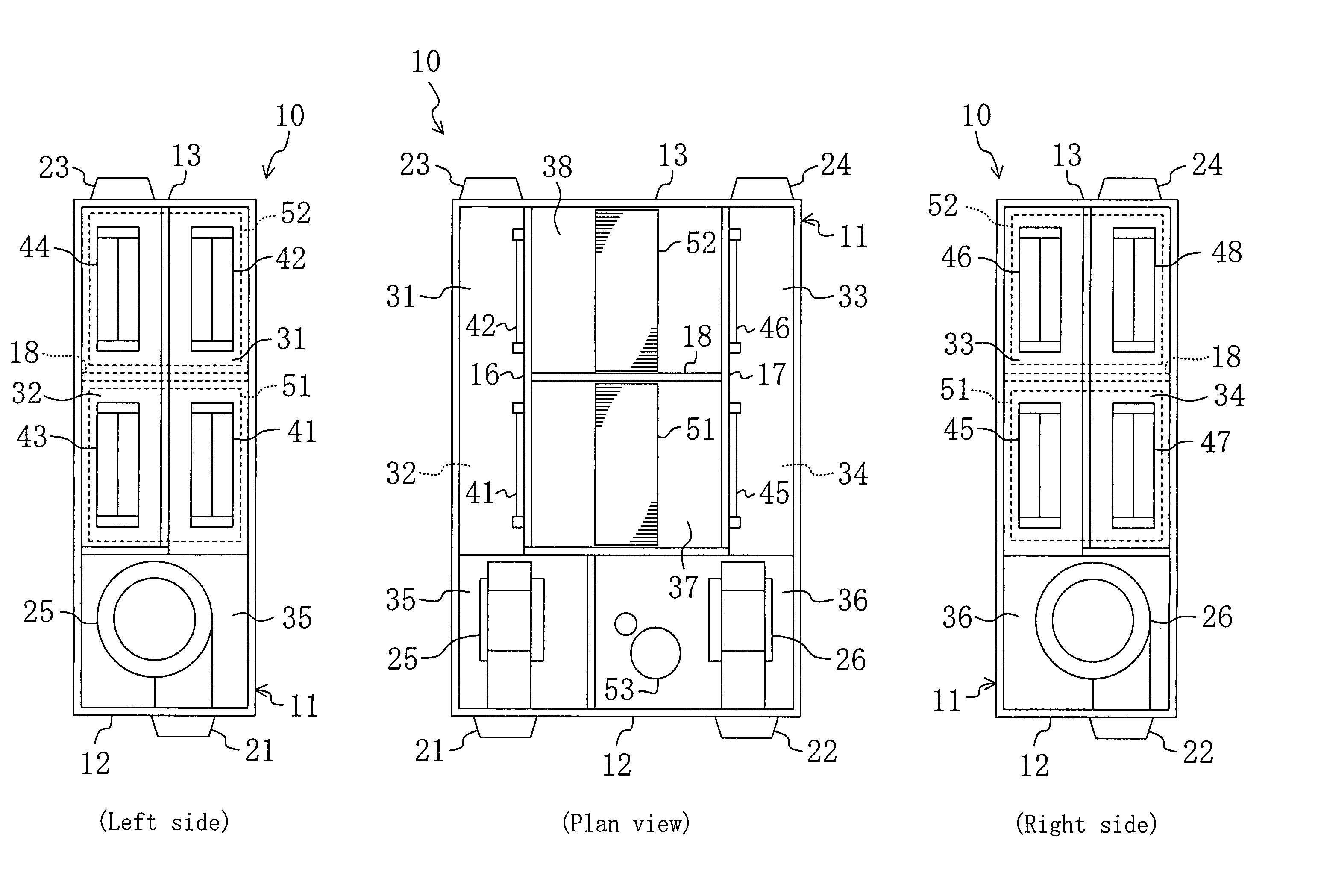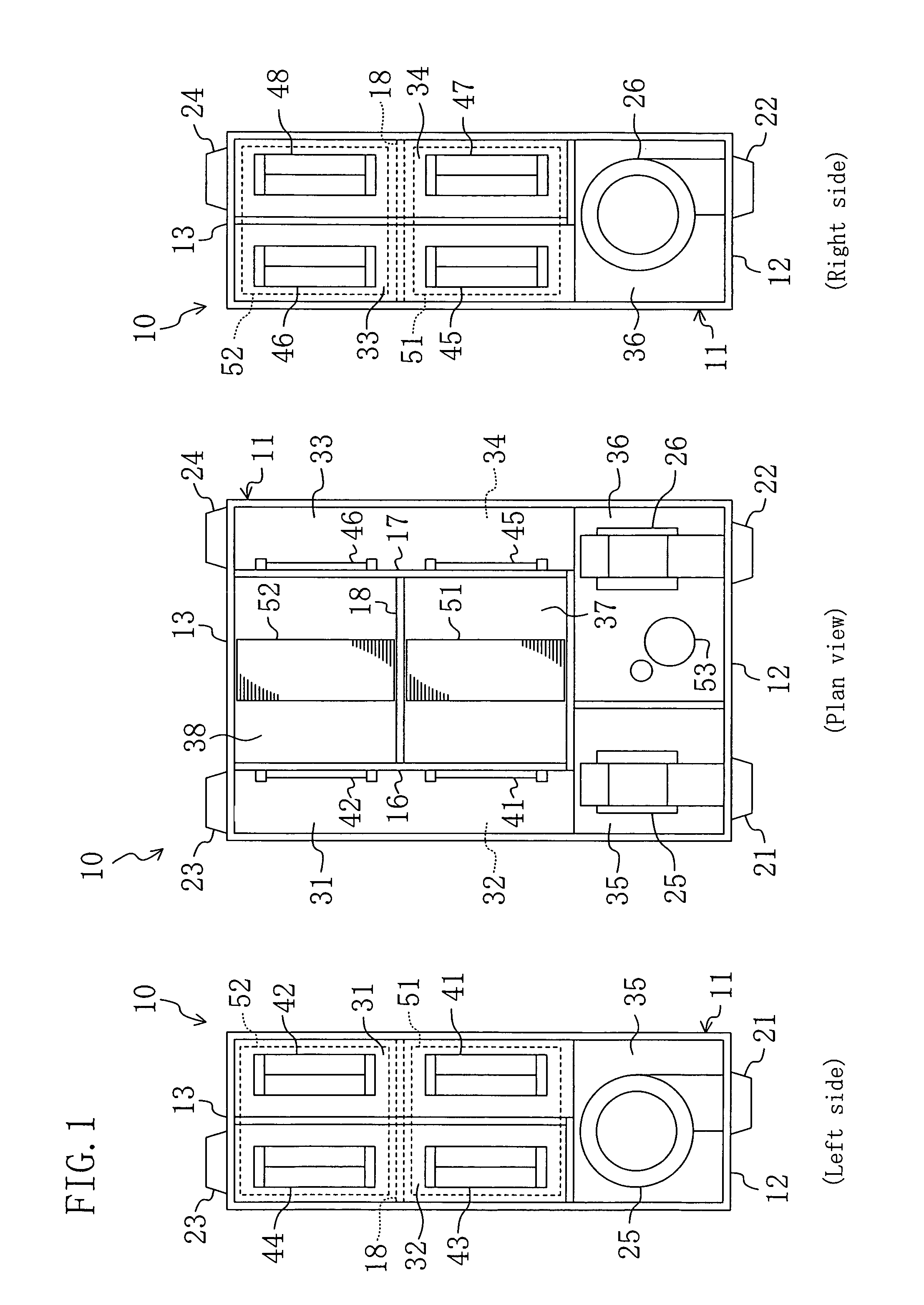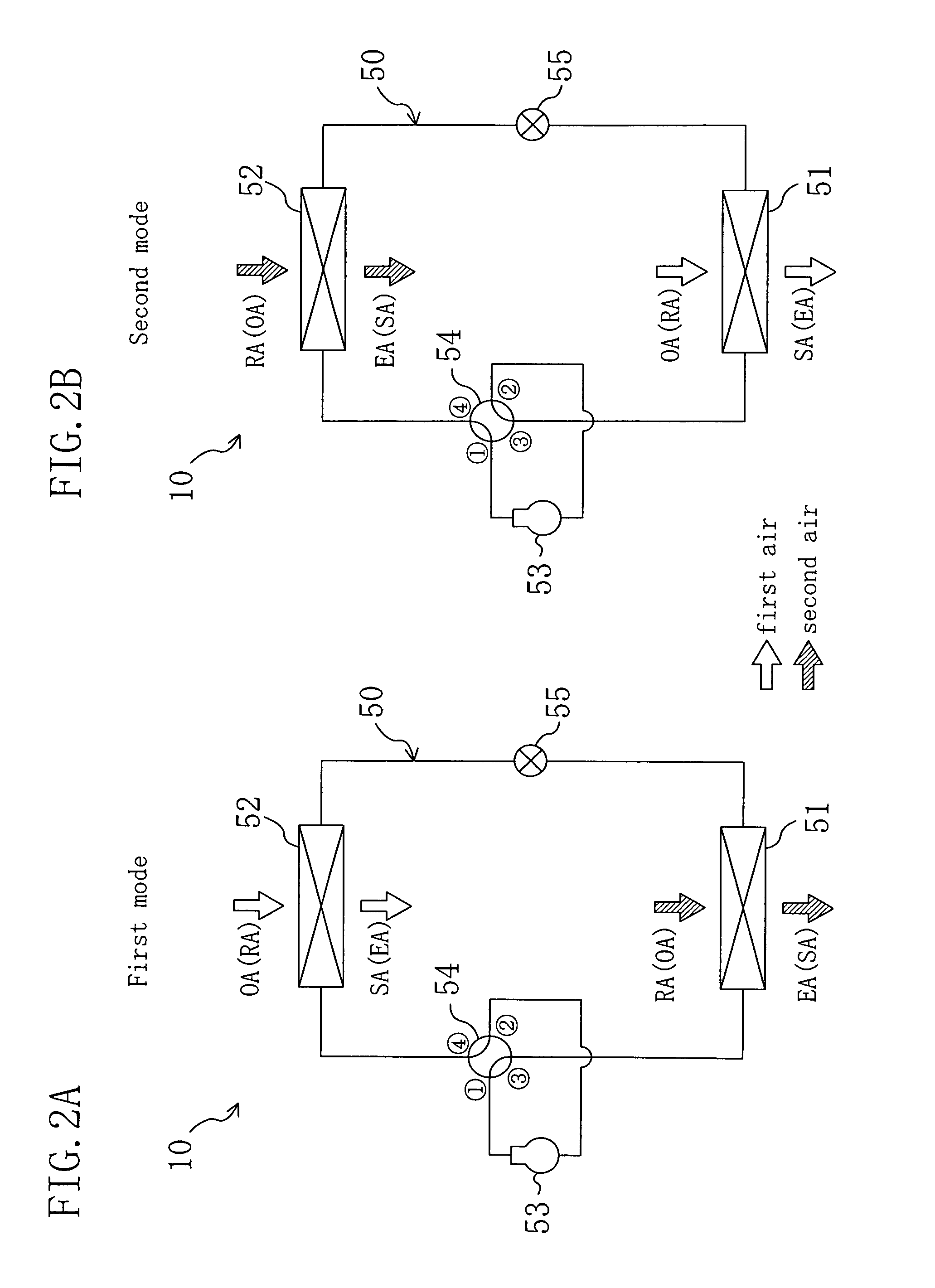Humidity control system
a humidity control system and humidity control technology, applied in the direction of heating types, heating apparatus, separation processes, etc., can solve the problems of adsorption heat exchanger surface freezing, adsorption heat exchanger peeling off, adsorption heat exchanger surface deterioration, etc., to achieve the effect of enhancing the dehumidification capacity of the humidity control system, reducing the temperature, and effective increasing the temperatur
- Summary
- Abstract
- Description
- Claims
- Application Information
AI Technical Summary
Benefits of technology
Problems solved by technology
Method used
Image
Examples
embodiment 1
Effects of Embodiment 1
[0107]According to Embodiment 1, outdoor air flows in the adsorption heat exchanger (51, 52) serving as a condenser during the regeneration action of the humidification operation from upstream to downstream in the flow of refrigerant. Therefore, the air can be effectively increased in temperature at the air inflow end of the adsorption heat exchanger (51, 52). Thus, even when extremely low-temperature outdoor air passes through the adsorption heat exchanger (51, 52) such as in winter, the outdoor air can be increased to a relatively high temperature at the air inflow end of the adsorption heat exchanger (51, 52). Therefore, dew condensation water can be prevented from freezing on the surface of the adsorbent on the adsorption heat exchanger (51, 52), thereby preventing attendant deterioration of the adsorbent and the binder bonding the adsorbent to the heat exchanger body. Hence, the adsorbent can be prevented from peeling off from the adsorption heat exchange...
embodiment 2
Modification of Embodiment 2
[0151]Instead of the refrigerant circuit of Embodiment 2, a refrigerant circuit (50) shown in FIG. 17 may be applied to the humidity control system (10). In the refrigerant circuit (50) of this modification, a second four-way selector valve (56) is connected in addition to the elements of the refrigerant circuit (50) of the above embodiment.
[0152]In the refrigerant circuit (50), the compressor (53) is connected at its discharge side to a first port of a first four-way selector valve (54) and connected at its suction side to a second port of the second four-way selector valve (56). The first adsorption heat exchanger (51) is connected at one end to a third port of the first four-way selector valve (54) and connected at the other end to a third port of the second four-way selector valve (56). The second adsorption heat exchanger (52) is connected at one end to a fourth port of the first four-way selector valve (54) and connected at the other end to a fourth...
PUM
 Login to View More
Login to View More Abstract
Description
Claims
Application Information
 Login to View More
Login to View More - R&D
- Intellectual Property
- Life Sciences
- Materials
- Tech Scout
- Unparalleled Data Quality
- Higher Quality Content
- 60% Fewer Hallucinations
Browse by: Latest US Patents, China's latest patents, Technical Efficacy Thesaurus, Application Domain, Technology Topic, Popular Technical Reports.
© 2025 PatSnap. All rights reserved.Legal|Privacy policy|Modern Slavery Act Transparency Statement|Sitemap|About US| Contact US: help@patsnap.com



